Coronavirus Today: Christmas shopping amid a surge
- Share via
Good evening. I’m Amina Khan, and it’s Wednesday, Dec. 23. This newsletter will be taking the rest of the week off for the holidays, so here’s the latest on the pandemic, plus some of the week’s best stories to take you through the long weekend.
As coronavirus cases continue to spread like wildfire across the state, millions of Californians have been asked to remain home instead of visiting friends and family for the holidays. That hasn’t stopped people from piling into shopping malls — creating a new flashpoint during a surge that is already the worst by far since the COVID-19 pandemic began.
Paola Hernández began her holiday shopping online, but she and her daughter went to the Citadel Outlets in Commerce for items she couldn’t find on the internet. She watched as shoppers bumped shoulders, ignored signs directing foot traffic and licked ice cream cones a few feet away, despite the ban on eating at the outdoor mall. Even sitting on a bench felt unsafe after a third person sat next to her, ignoring a sign stating that it seated only two.
“I do feel scared. ... A lot of us don’t follow the rules. That’s the problem,” said Hernandez, who lives in El Monte. “The virus is in the air.”
Los Angeles County rules dictate that “nonessential” shopping malls and retail businesses must limit crowds to 20% of their maximum capacity. But many people, including public officials, still think they’re unsafe. L.A. County health services director Dr. Christina Ghaly said images of busy shopping centers had her worried.
“If you’re still out there shopping for your loved ones for this holiday season ... then you are missing the gravity of the situation that is affecting hospitals across L.A. County,” Ghaly said. “Though they may seem benign, these actions are extremely high-risk.”
Consider this: The vast majority of outbreaks at shopping malls were reported in the past four weeks, a Times analysis shows. At Northridge Fashion Center, 12 J.C. Penney employees recently tested positive for the coronavirus. So did 10 workers at a Kohl’s in the South Bay Galleria in Redondo Beach and 24 at the Best Buy in the West Hollywood Gateway retail center.
The flare-ups at retail stores and malls aren’t indications of unsafe practices on the part of the companies or their workers. Rather, they’re a sign of how hard it is to control the virus’s spread when its prevalence is so high.
They also provide a vivid example of the contradiction baked into the county’s rules: Stores selling nonessential goods, such as books, clothes and consumer electronics, remain open, even as officials warn residents that it’s dangerous to leave the house unless absolutely necessary.
“It’s like telling little kids, ‘You can’t have a lollipop, but I’m going to put one right there in front of you,’” said Reina Morataya, a manager at a clothing store at Plaza El Segundo, which has seen a flood of customers in the run-up to Christmas.
Health officials continue to struggle with these behavioral dilemmas while the situation in California continues to worsen. It took almost 10 months for California to record a million coronavirus cases — but now, only six weeks later, the state has just surpassed 2 million cases, becoming the first state to do so, according to a county-by-county tally conducted by The Times.
And Los Angeles County reported its deadliest day yet during the pandemic Wednesday — a dire development officials consider an alarming harbinger of even darker days ahead unless everyone takes steps to turn back the tidal wave of new infections.
As you consider the items on your last-minute shopping list, these numbers should serve as a sobering reminder of what’s at stake when officials urge you to stay home.
“Our actions have an impact on the health and well-being of many people in our county, and not following the public health rules has deadly consequences,” L.A. County Public Health Director Barbara Ferrer said.
By the numbers
California cases and deaths as of 5:36 p.m. PST on Wednesday:

Track the latest numbers and how they break down in California with our graphics.
See the current status of California’s reopening, county by county, with our tracker.
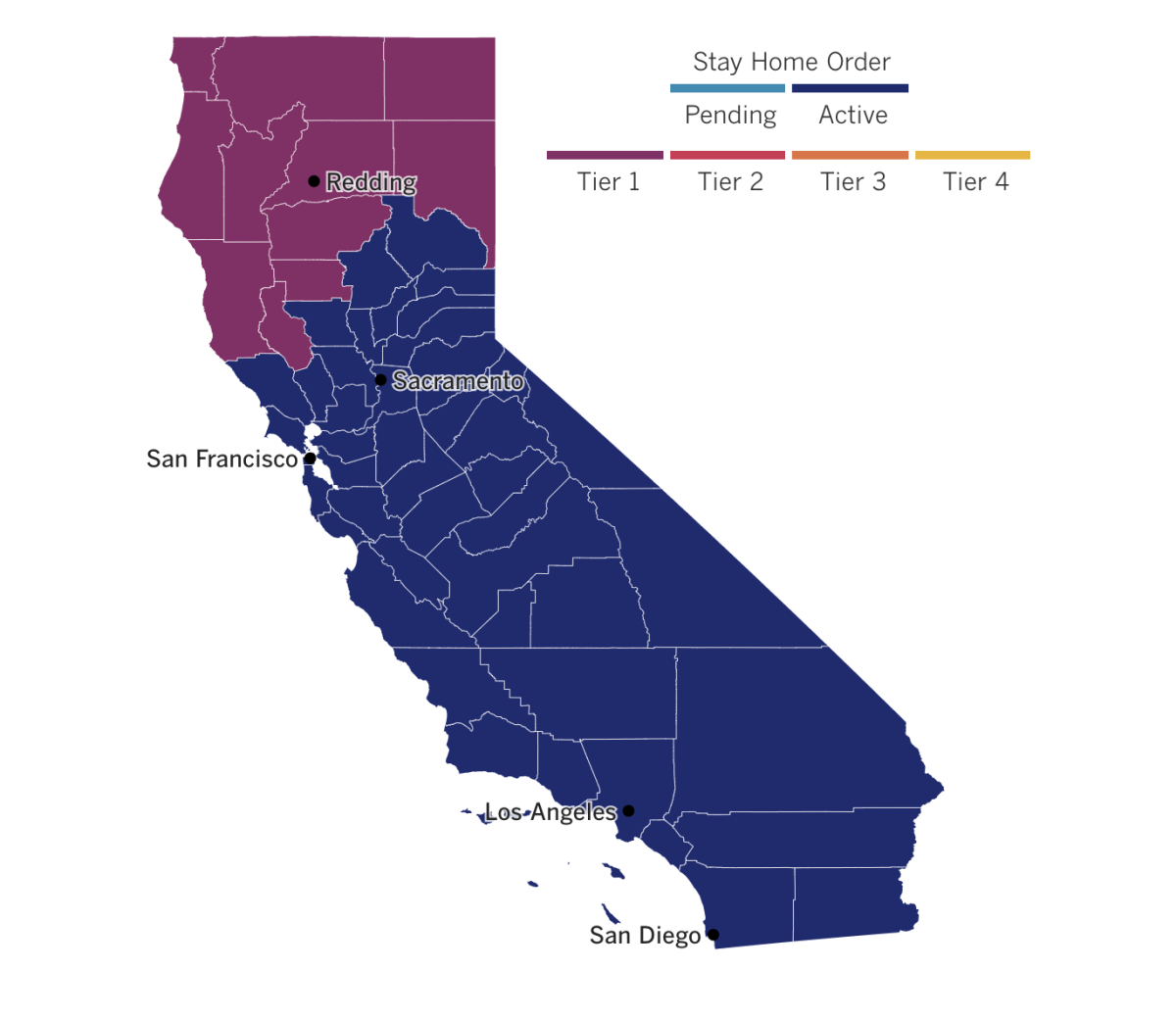

What to read this weekend
Painful treatment or peaceful death?
Bob Harris told his family he did not want to be placed on a ventilator. The 61-year-old said he was at peace and ready to meet Jesus. But his family wasn’t prepared for him to stop fighting COVID-19, and he agreed to be intubated for a week. Then that week stretched into three, and by early December the Harris family faced a terrible decision: Should they keep Bob on the ventilator, or remove him from it and let him go?
Being on a ventilator hurts. Patients often try to pull out the tube that goes down their throats into their lungs. And if Bob were to continue, doctors would have to cut a hole in his neck to pump oxygen into his lungs through a tube in his airway rather than down his throat.
On the ventilator, Bob was silenced. He was also alone. The only circumstances in which his family could visit were if the ventilator was turned off and he was about to die.
From my colleagues Maria L. La Ganga and Francine Orr comes this story of a family torn over whether to honor the wishes of a loved one silenced by COVID-19 because doing so meant losing him forever.

A pandemic party van
A party van really helps when trying to reach farmworkers in these pandemic times. Ricardo Castorena, 47, only found that out by accident — he drives a van painted in psychedelic blues, reds and yellows, emblazoned with the logo of Radio Lazer KLUN-FM 103.1.
Castorena had only been trying to get free gas when he made the deal with the radio station, but it turns out that the vibrant van, the music he brought and the listening ear he offered to farmworkers are powerful tools for connecting with people in need.
“I get a lot of joy out of this,” Castorena said. “Someone can say, ‘Hey, that’s my song’ and forget their worries for three minutes. All we can do is try to create a little joy and laughter amid all the drama.”
At first, Castorena said, his goal was to deliver 50,000 masks provided through a state grant. But in the fields, he can start conversations and find the best ways to help. What people give isn’t always what’s really needed. And the top needs among those he surveyed were toothbrushes and toothpaste, followed by a toy for their children. Read the rest of this lovely story by my colleague Diana Marcum here.
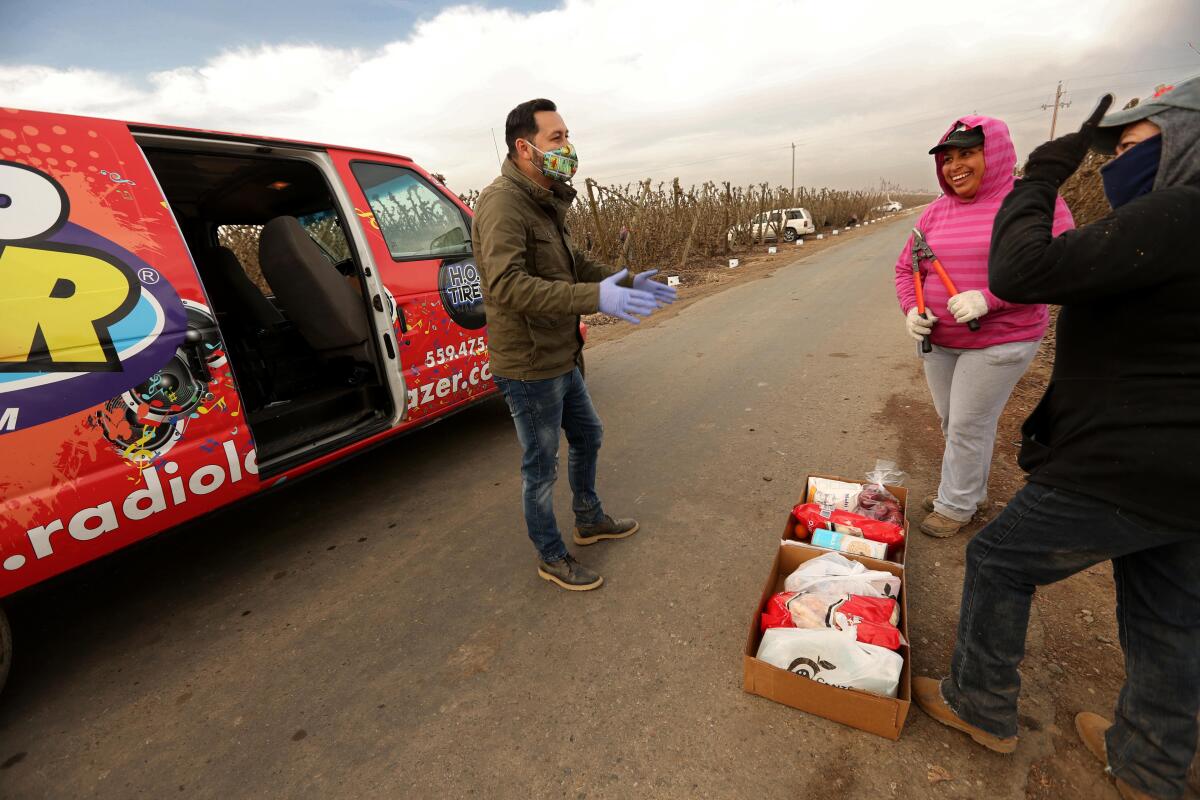
For a COVID-19 unit nurse, death comes every day
From Houston, my colleague Molly Hennessy-Fiske brings us the story of Flor Treviño, a COVID-19 unit nurse at United Memorial Medical Center who works — sometimes in vain — to keep her seriously ill patients alive.
When a patient’s pulse stops, she’s one of the nurses who run into the room, pump on his chest and administer epinephrine to jump-start his heart. When he dies, she’s also there to disconnect the IVs and monitors, clean his skin with disposable wipes and ease him into a white body bag.
Nurses like Treviño often feel as isolated as their patients and have to be constantly vigilant — wrapped in face shields, protective suits, masks, gloves and shoe covers. Treviño’s husband, a flooring company supervisor, has learned not to ask about her shifts, which begin before dawn and end after the sun has set.
Treviño says she has nightmares about beeping monitors. “People come in walking and talking and in a few days, they die,” she explained. “It’s just so emotionally and physically draining.”
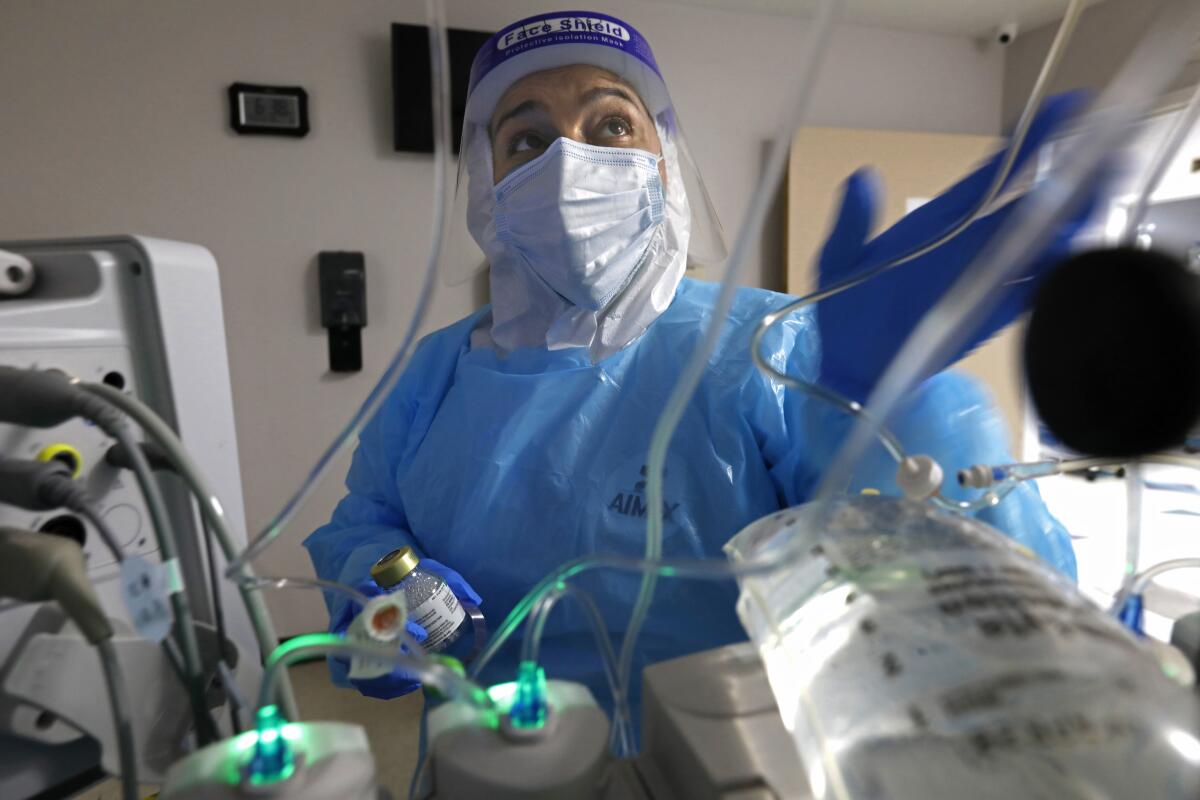
The worst Christmas of her life
Columnist Mary McNamara has spent much of this pandemic year praying for the children of alcoholics and addicts, “trapped by one disease that demands we all stay at home — and cornered by another that can turn a loving parent into a frightening abuser at the drop of an ice cube.”
McNamara describes her alcoholic mother as a lovely, funny, generous woman when she was sober, who taught high school business education. She was great at her job, but as a teacher, it meant she had two weeks of winter break to drink without stopping. And then, one typically difficult Christmas Day, her father had a heart attack. It was the worst Christmas ever — though in some ways it turned out to be a Christmas miracle, she writes. (I won’t spoil the end; read the full story here.)
McNamara has a message for children and young adults trapped in situations like hers: “You are not alone — and it is not your fault and it is not your job to fix it. It is your job to survive, to get on with your life as best you can, and there are people who will help you do that.”
A mall, and cultural center, in decline
For decades, the Baldwin Hills Crenshaw Plaza has been a gathering place for Black Los Angeles and a venue for small businesses. The mall has continued serving the community during the pandemic, hosting food drives and a coronavirus testing site. But the pandemic has pushed the plaza to the financial edge, as the crucial holiday shopping season has run smack into the pandemic’s worst surge yet.
Malik Muhammad co-owns Malik Books with his wife, April. His inventory includes a mix of autobiographies by prominent Black figures, books on antiracism and organizing, and dozens of picture books featuring Black and brown children. He’s been a tenant at the mall on and off since 1994, and he says he’s never seen traffic this bad.
“Every day people say, ‘I didn’t even know the mall was open,’” Muhammad said. “We’ve been devastated and this mall has been devastated.”
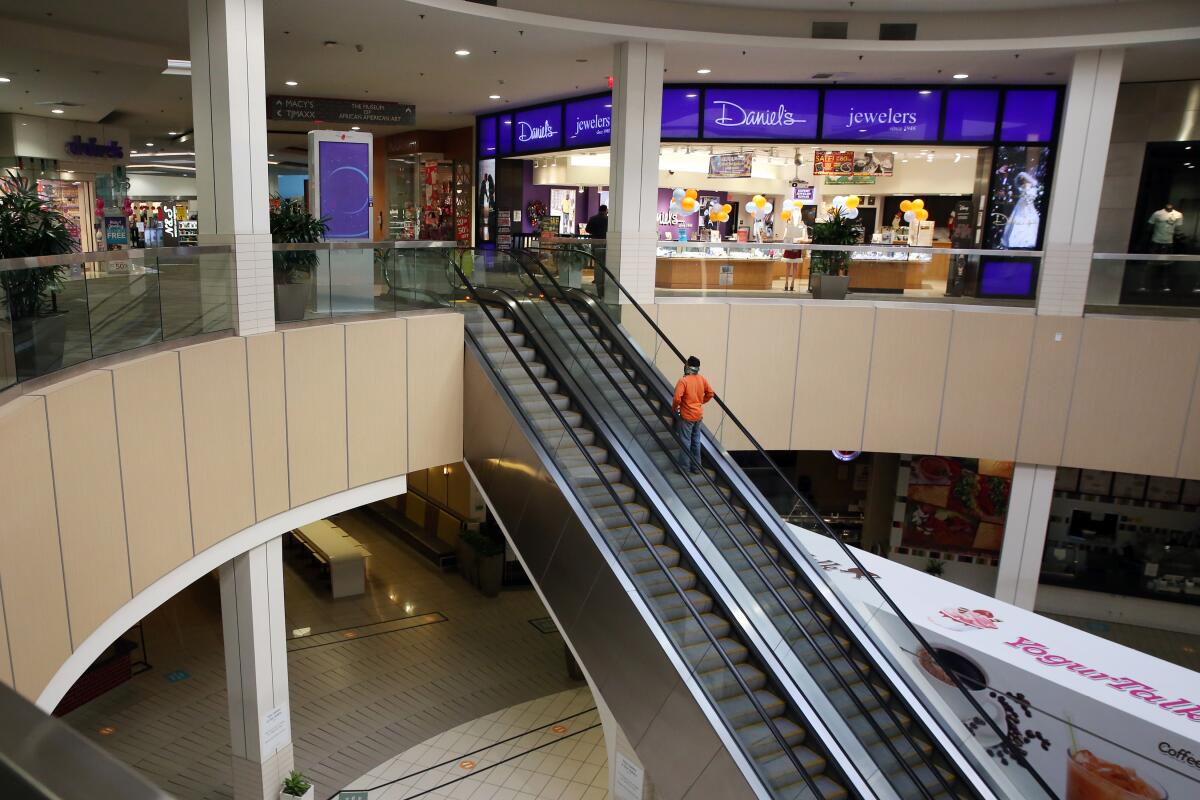
Nightmare at sea
“Michael Dorety was a retired 68-year-old Dallas firefighter who had the long-standing mental habit of calculating catastrophes, the better to avoid them. He sat by exit doors. He refused to book 11th-floor hotel rooms, because engine ladders only reached 10. He taught his kids to avoid escalators, which could snag shoelaces. Yet Dorety showed no alarm when he and his wife, Susan, climbed aboard the Grand Princess cruise ship at Pier 27 in San Francisco on Friday, Feb. 21, joining some 2,500 passengers and 1,100 crew members.”
So begins Christopher Goffard’s tale of the doomed voyage that, for many Americans, was the first indication of just how dangerous the coronavirus could be. Passengers aboard the ship viewed one another with suspicion. Crew members seemed woefully out of their depth. And the government officials who insisted on managing the ship’s return to dry land kept changing their plans.
“The outbreak aboard the ship is a window on the early days of the pandemic’s spread, and of the shifting, improvisational, sometimes fumbling response it engendered,” Goffard writes.
Your support helps us deliver the news that matters most.
The pandemic in pictures
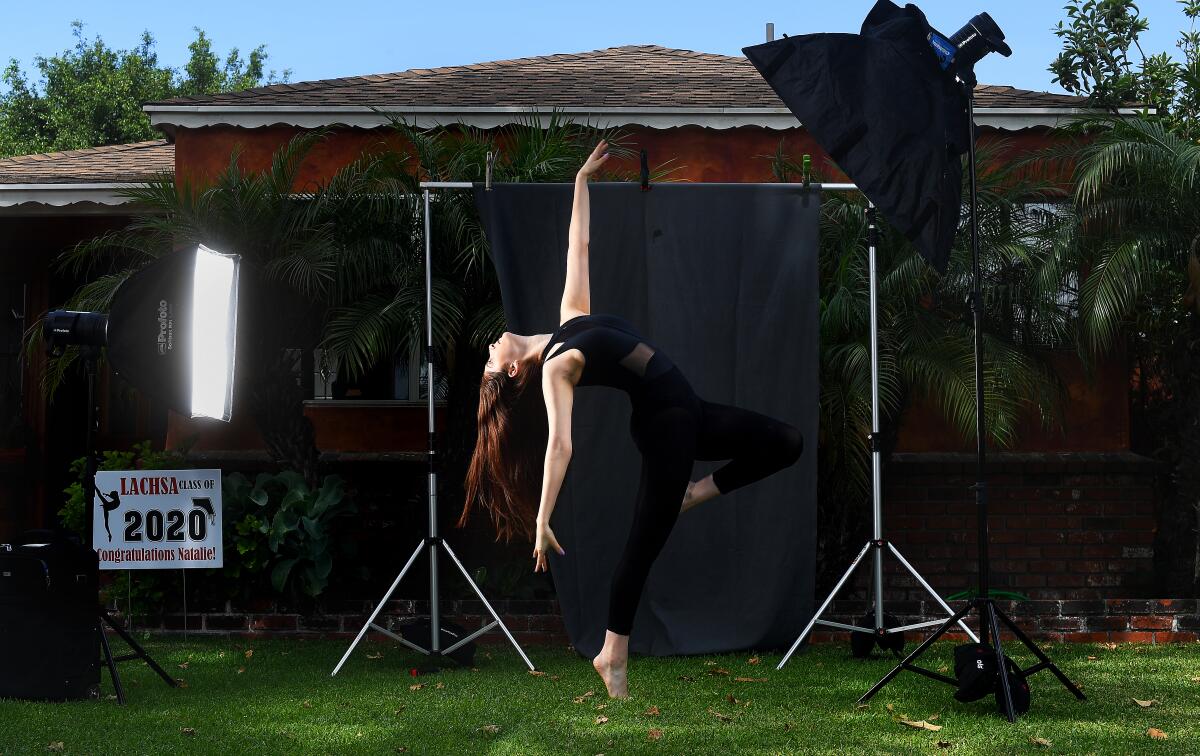
In July, The Times spoke with five high school graduates preparing to enroll in university arts programs as the pandemic raged. Now, with one semester under their belt, my colleague Makeda Easter followed up with some of these students, to see how their college experiences have turned out.
One of those students is Natalie Aronno of South Gate. She’s a first-generation college student who chose to study dance at UC Irvine because her tuition would be fully covered by federal aid. Because all of her classes were held over Zoom, she turned her living room into a dance studio by squeezing all her furniture into a corner. She took ballet and modern technique classes, as well as a course called dance health and injury prevention.
“I ended up enjoying those a lot more than I expected, because the teachers really did pay attention to us, commenting on our technique, correcting us and really helping us grow,” she said.
Readers, forgive me. Today’s edition may feel a tad depressing, even for a newsletter about a global pandemic. But as we head into the holiday, I want to wish you a meaningful and restful long weekend. Stay safe, be well — and see you Monday.
Resources
Practice social distancing using these tips, and wear a mask. Here’s how to do it right.
Watch for symptoms such as fever, cough, shortness of breath, chills, shaking with chills, muscle pain, headache, sore throat and loss of taste or smell. Here’s what to look for and when.
Need to get tested? Here’s where you can in L.A. County and around California.
Americans are hurting in many ways. We have advice for helping kids cope, resources for people experiencing domestic abuse and a newsletter to help you make ends meet.
For our most up-to-date coverage, visit our homepage and our Health section, get our breaking news alerts, and follow us on Twitter and Instagram.




